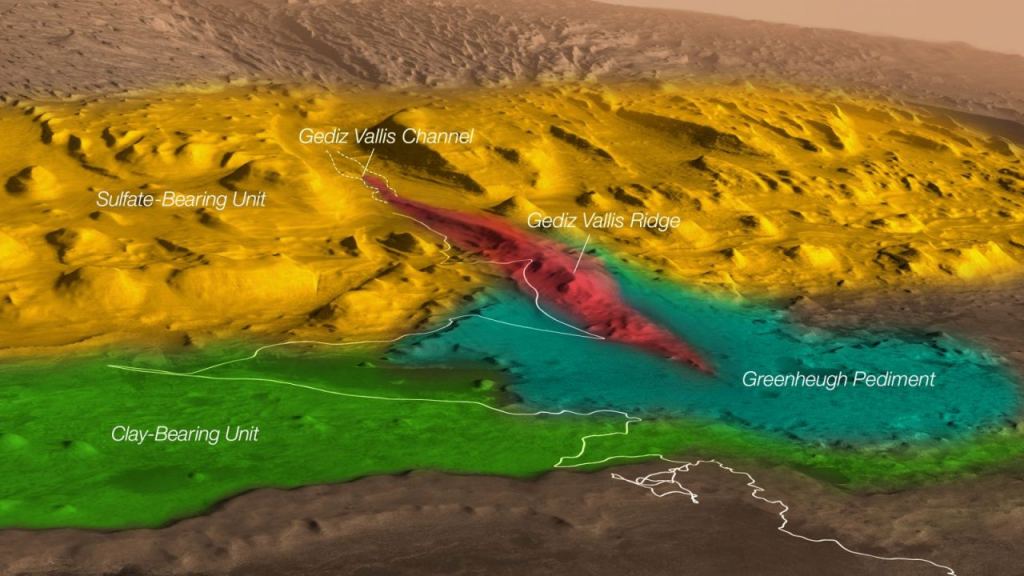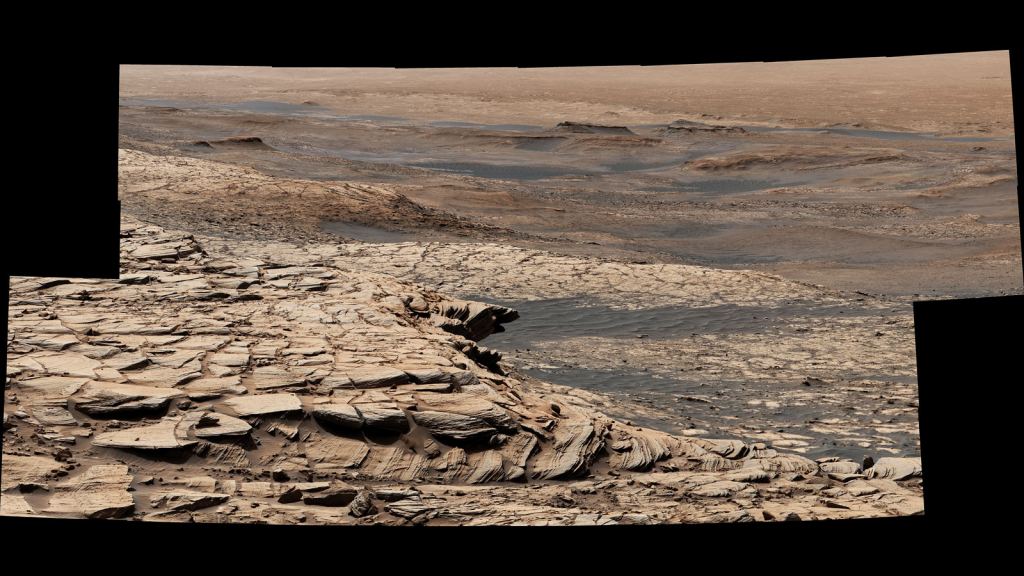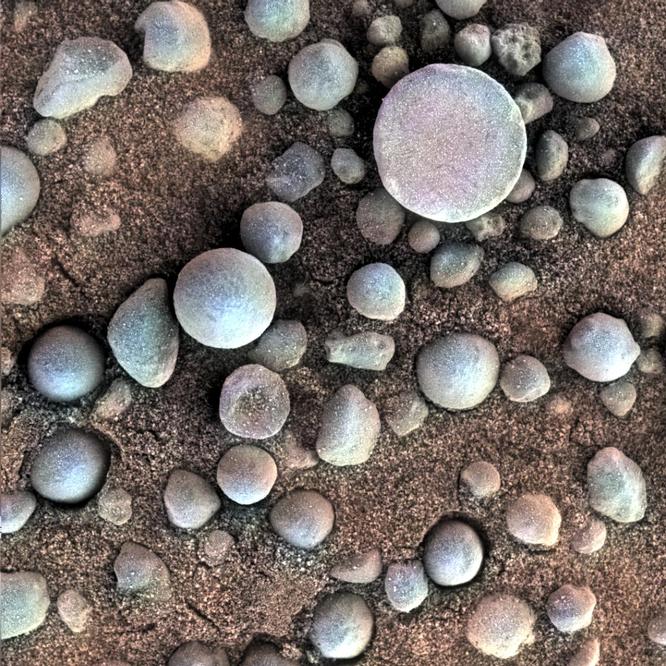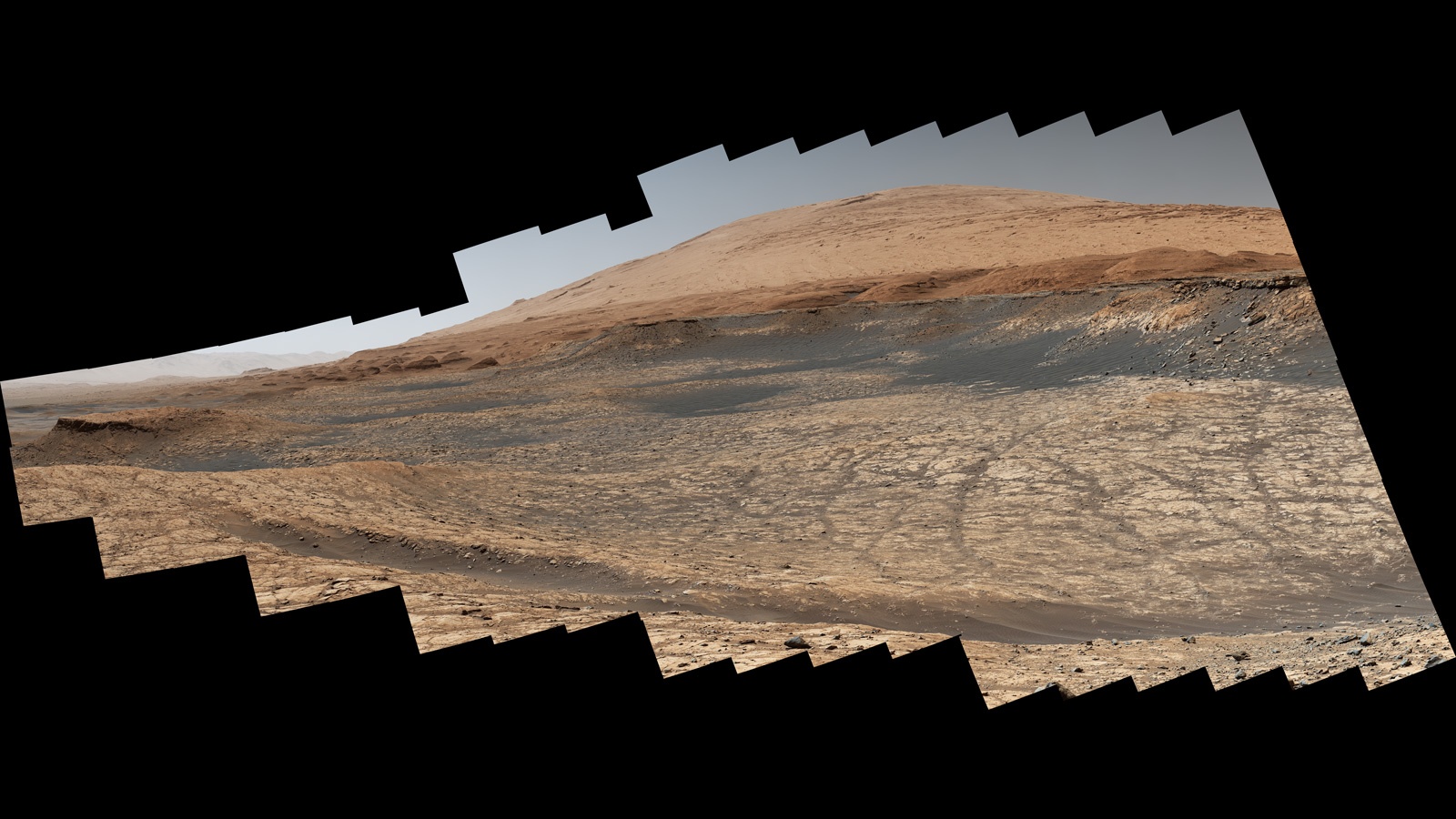Do road trips actually require roads? Not if you’re NASA’s Curiosity rover, who is embarking on an extended 1 mile long road trip this summer up the side of Mount Sharp.
The rover will be moving between two “units” of Gale Crater, where it has been exploring since 2014. It’s wrapping up experiments in the “clay-bearing unit”, which resulted in the highest concentrations of clay found during the mission. It’s now moving to the “sulfate-bearing unit”, which is expected to contain an abundance of sulfates, such as gypsum and Epsom salts.
The presence of these sulfates, as well as the clay in the area the rover is leaving behind, provide scientists with a more in depth history of the presence of water in Gale Crater. Both clay and sulfates often form in water, pointing to a much wetter past for the crater’s landscape.

Despite that wetter past, the entire landscape has been covered in sand, making it hazardous to drive over. That sand is causing Curiosity to take a mile long detour to avoid getting stuck. The rover drivers, who are working from home like much of America, will only partially be directing Curiosity on the path to take. The rover will also rely on its self-driving capability, a version of which you can help train if you’re looking for a way to contribute to space exploration during the long lockdown summer.
Since it is not subject to any travel restrictions, Curiosity made a detour back in March to the top of the Greenheugh Pediment, a feature that spans both the clay and sulfate units. At the top, the rover snapped an image that shows the extent of the road trip it is currently undertaking. It also showed a number of nodules, known colloquially as “blueberries”, that were similar to those found by Opportunity 5,200 miles away. The blueberries found by Opportunity are formed largely of hematite, a type of iron oxide that is common on both Earth and Mars, though the ones discovered by Curiosity appear to be made up of different materials.

The science team might want to schedule an additional detour to sample some of these novel blueberries. That detour might delay the rover’s planned early fall arrival time at the sulfate-bearing unit. At least Curiosity won’t continually ask its handlers if it’s there yet.

Learn More:
NASA: Press Release
NASA: Curiosity Homepage
UT: Curiosity finds clay

